#Invisible Ink Integration
Explore tagged Tumblr posts
Text
Today's Black History Month illustration is of Josephine Baker. She was a world famous entertainer, WWII spy, and activist.

Freda Josephine McDonald was born in St. Louis, Missouri in 1906. Her parents were both vaudeville performers, but Baker would have to take on odd jobs to help support her family.

At the age of 15, she ran off and joined a dance troupe from Philadelphia. She also got married, took her husband’s last name, dropped her first name and started going by the name Josephine Baker. After acting and dancing in musicals, she moved to New York City and was soon performing at the Plantation Club where she became a crowd favorite.
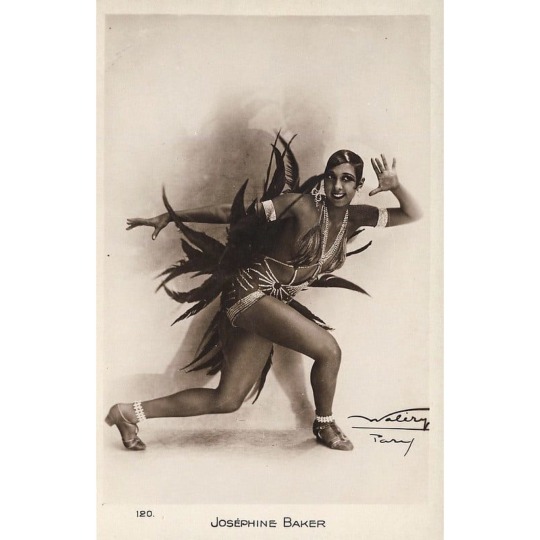
In 1925, Baker went to Paris to dance at the Théâtre des Champs-Élysées in La Revue Nègre. When the Revue closed, she was given her own show and her career skyrocketed.

She was the first Black woman to star in a motion picture and one of the first Black entertainers to achieve acclaim on screen and stage.
Baker became a citizen of France in 1937. When the Germans occupied France during WWII, she worked with the Red Cross and the French Resistance by transporting confidential information by writing with invisible ink on her sheet music. She was awarded the Croix de Guerre and the Legion of Honor with the rosette of the Résistance.

Baker traveled many times to the US to participate in the civil rights movement. She was the only woman who spoke at the March on Washington for Jobs and Freedom in 1968.
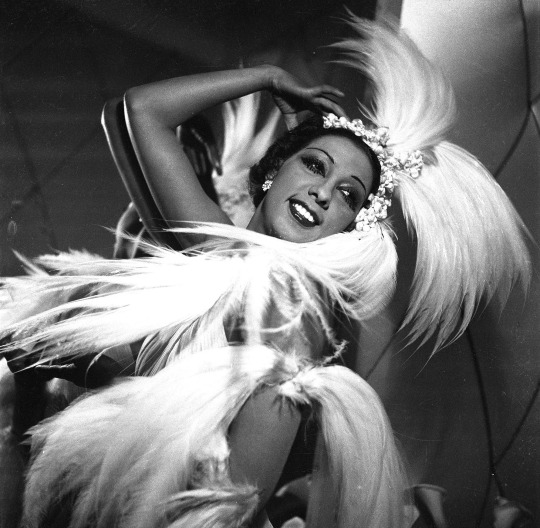
Her time at home forced her to confront segregation and discrimination that she didn’t experience overseas. She often refused to perform for segregated audiences and club owners were forced to integrate for her shows.
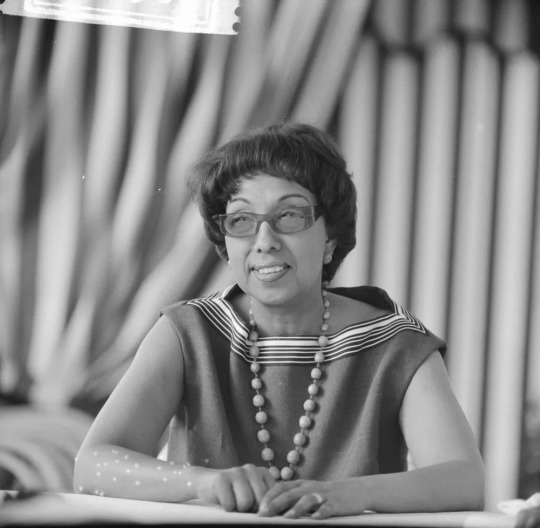
She continued to perform until her death in 1975, during the celebration of the 50th anniversary of her Paris debut.
I’ll be back on Monday with the last illustration and story!
#josephine baker#black history facts#black history month#black history 365#artists on tumblr#illustrators on tumblr
2K notes
·
View notes
Text
Dance Steps
do you really want
me to be quiet . . .
silenced by lies
voiceless until invisible
because the truth
threatens your position
power and importance
it's a blow to your ego
you never saw coming
so you better . . .
start running, running
away from
this forthcoming day
when full transparency
will shatter your integrity
bullshit and blasphemy
for nothing is sacred
that you haven't forsaken
your disrespect goes unchecked
because you think
you're smarter and wiser
well, we can see
through your lies . . . sir
so stop stirring . . .
up shit with me
or you're going
to go down in poetry
exposed to those who know
the ways of integrity
how subliminal to criminal
. . . I ink my lines . . .
from subversive to sublime
and in my latest stanzas
my narcissistic dancer
the next dance steps are mine
☆ ☆ ☆ ☆ ☆
©️ @followcb ☆ August 16, 2024
#poetry#followcb#spilled ink#creative writing#great poets#poets on tumblr#poem#twcpoetry#simple truths#new poets society#poeticstories
15 notes
·
View notes
Text

Josephine Baker was described as "The most sensational woman anybody ever saw. Or ever will."
Born in St. Louis, Missouri, in 1906, Josephine experienced poverty in childhood, living in cardboard shelters in the slums and dancing on the street to make money. However, the street dancing turned into performing in a vaudeville act, as she pestered a show manager for a role. For that show, she traveled to New York, and her career had begun.
While performing in New York was a good start, her big break came in Paris, where she moved in her late teens to leave the racism of America. In Paris, she thrived. Her dancing life found much success. And it was also while living in Europe that Josephine evolved her artistic career into singing and acting.
Josephine continued to live in Europe. Even as World War II involved France, she chose to stay, joining the French Military Intelligence Agency. In her role with the agency, she used her entertainer status to travel around Europe. And with charm, she engaged others, collecting valuable information, often keeping notes in invisible ink on sheet music.
After the war, Josephine took a more active role in the U.S. Civil Rights movement. She wrote articles about segregation, worked closely with NAACP, spoke at the 1963 March on Washington, and refused to perform in segregated venues - a stance that helped drive integration. It was also during her years of working in the Civil Rights movement that Josephine began adopting children, calling her family the "Rainbow Tribe," as her children were of different races and ethnicities.
Josephine passed away in Paris in 1975. France honored her with a state funeral; she is the only American-born woman to receive this honor.
—
Sources: "The most sensational woman anybody ever saw. Or ever will." - quote from Ernest Hemingway / Portrait of Josephine Baker taken in 1940 / Studio Harcourt / Wikimedia Commons
To join our mailing list: https://historicalsnaps.com/historical-snapshots-mailing-list/
4 notes
·
View notes
Text
Guo Feng Yi: the Bamboo, 1995
Guo Fengyi (1942-2010), born in Xi'an, China, is a self-taught female artist. She concerns spiritual and metaphysical dimensions of meaning, which reflect her generation's love of traditional Chinese folk art. And these folk arts have given us the particular historical, mythical, and mystical aura. Her brushstrokes on paper are deep and delicate, and the images she paints relate to the human body and mind and portray a certain spiritual presence.

the bamboo , 1995, rice paper & ink
In Guo Fengyi's bamboo, we see not the external shape of bamboo but a metaphysical and spiritual element beyond the form itself. It depicts an invisible world to the human eye and another dimension of nature. I think this is very worthwhile in my creative process: combining human spirituality with the theme of nature. In this way, an imaginative and solid personal interpretation of nature has been created. It is something that I would like to explore a deeper part of my work in the idea of "Metaphysical Nature." At the same time, integrating Chinese folklore elements will also give a more cultural aspect to my creative practice.
Artist : Guo Fengyi
Time : 1995
Title: Bamboo
Media: ink on rice paper
Weblink: http://www.longmarchspace.com/zh/artists/guo-fengyi/
2 notes
·
View notes
Text








josephine with her pet cheetah, chiquita

josephine traveling by ostrich in budapest

when she was a spy for the french resistance, she took advantage of her ability to travel around europe as an entertainer without arousing suspicion to gather and smuggle information, including by writing messages on her sheet music in invisible ink and pinning notes to her underwear
in budapest she was the subject of a duel between a hungarian calvary officer and the ersatz italian count who served as her manager (josephine watched them swordfight for a few minutes then made them stop and settle their differences with only minor injuries sustained)
in addition to her famous cheetah and more conventional animals like cats, dogs and fish, her pets included a pig named albert and a goat named toutoute
she was an outspoken civil rights activist and her refusal to perform for segregated audiences help integrate entertainment venues. she spoke at the 1963 march on washington right before dr. martin luther king jr. gave his "i have a dream" speech, saying
I have walked into the palaces of kings and queens, and into the houses of presidents and much more. But I could not walk into a hotel in America and get a cup of coffee, and that made me mad. And when I get mad, you know that I open my big mouth. And then look out, 'cause when Josephine opens her mouth, they hear it all over the world. [...]
Now I am not going to stand in front of all of you today and take credit for what is happening now. I cannot do that. But I want to take credit for telling you how to do the same thing, and when you scream, friends, I know you will be heard. And you will be heard now.
you can read her whole speech here (cw for a racial slur, in the context of describing discrimination she's experienced)


Propaganda
Anna May Wong (The Thief of Bagdad, Shanghai Express)—Wong was the first Chinese American movie star, arguably the first Asian woman to make it big in American films. Though the racism of the time often forced her into stereotypical roles, awarded Asian leading roles to white actors in yellowface, and prohibited on-screen romance between actors of different races, she delivered powerful and memorable performances. When Hollywood bigotry got to be too much, she made movies in Europe. Wong was intellectually curious, a fashion icon, and a strong advocate for authentic Asian representation in cinema. And, notably for the purposes of this tournament, absolutely gorgeous.
Josephine Baker (The Siren of the Tropics, ZouZou)— Josephine Baker was an American born actress, singer, and utter icon of the period, creating the 1920s banana skirt look. She was the first black woman to star in a major motion film. She fought in the French resistance in WWII, given a Legion of Honour, as well as refusing to perform in segregated theatres in the US. She was bisexual, a fighter, and overall an absolutely incredible woman as well as being extremely attractive.
This is round 6 of the tournament. All other polls in this bracket can be found here. Please reblog with further support of your beloved hot sexy vintage woman.
[additional propaganda submitted under the cut.]
Anna May Wong propaganda:
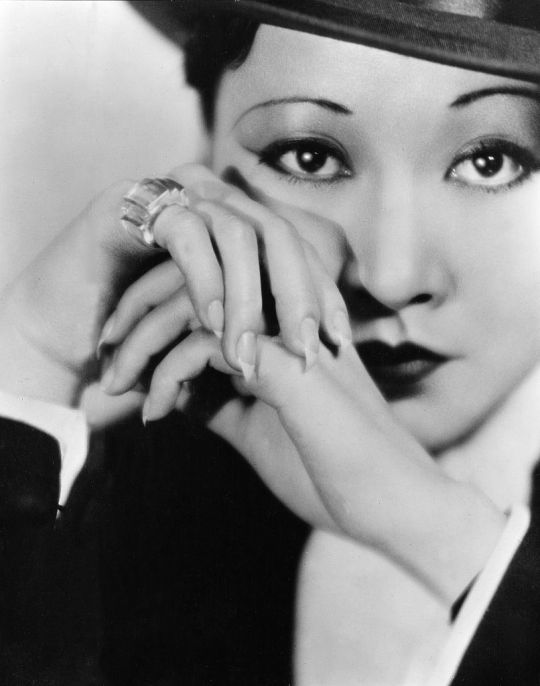
"She so so gorgeous!! Due to Hollywood racism she was pretty limited in the roles she got to play but even despite that she’s so captivating and deserves to be known as a leading lady in her own right!! When she’s on screen in Shanghai Express I can’t look away, which is saying something because Marlene Dietrich is also in that film."
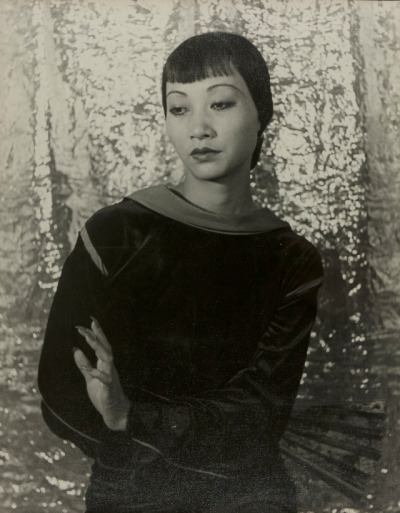
"SHE IS ON THE BACK OF QUARTERS also she was very smart and able to speak multiple languages and is a fashion icon on top of the acting/singing"
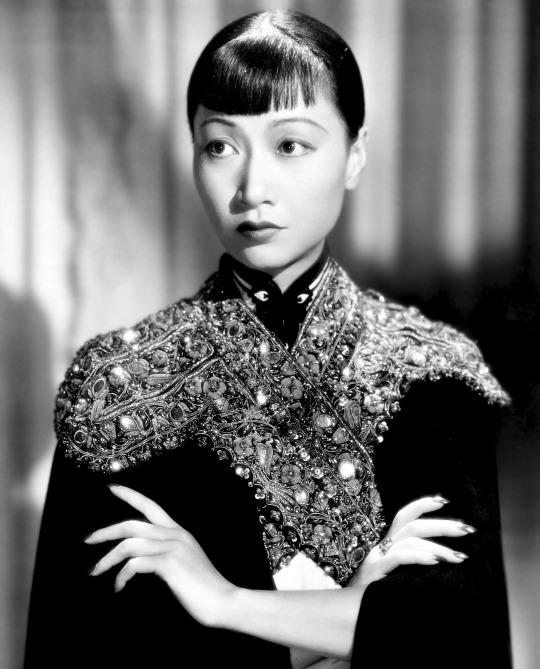
"Paved the way for Asian American actresses AND TOTAL HOTTIE!!! She broke boundaries and made it her mission to smash stereotypes of Asian women in western film (at the time, they were either protrayed them as delicate and demure or scheming and evil). In 1951, she made history with her television show The Gallery of Madame Liu-Tsong, the first-ever U.S. television show starring an Asian-American series lead (paraphrased from Wikipedia). Also, never married and rumor has it that she had an affair with Marlene Dietrich. We love a Controversial Queen!"

"She's got that Silent Era smoulder™ that I think transcends the very stereotypical roles in which she was typically cast. Also looks very hot smouldering opposite Marlene Dietrich in "Shanghai Express"; there's kiss energy there."
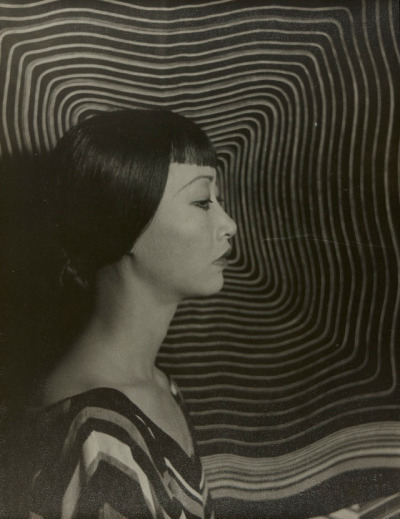
"Hot as hell and chronically overlooked in her time, she's truly phenomenal and absolutely stunning"
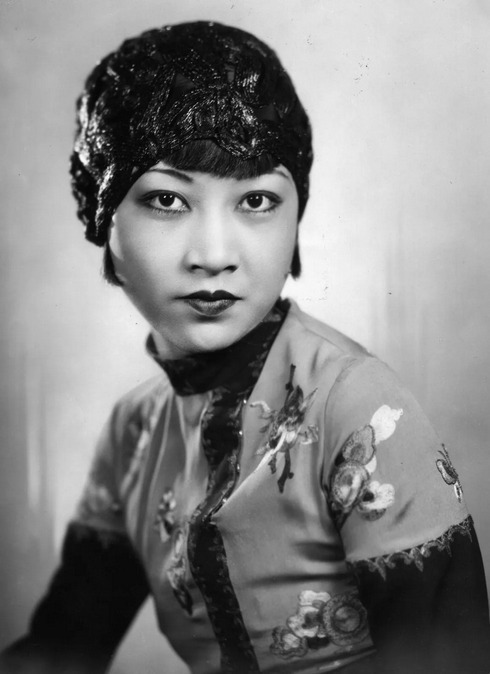
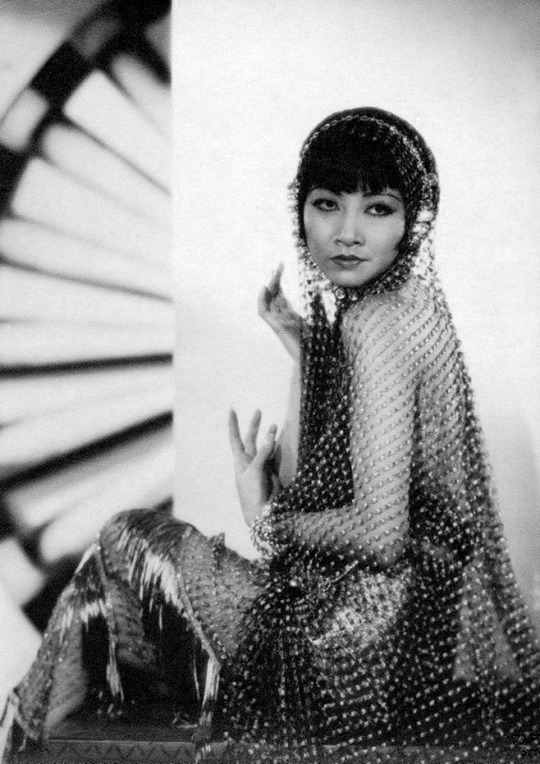
"A story of stardom unavoidably marred by Hollywood racism; Wong's early-career hype was significantly derailed by the higher-up's reluctance to have an Asian lead, and things only got worse when the Hayes code came down and she suddenly *couldn't* be shown kissing a white man--even if that white man was in yellowface. After being shoved into the Dragon Lady role one too many times, she took her career to other continents for many years. Still, she came back to America eventually, being more selective in her roles, speaking out against Asian stereotypes, and in the midst of all of this finding the time to be awarded both the title of "World's Best Dressed Woman" by Mayfair Mannequin Society of New York and an honorary doctorate by Peking University."
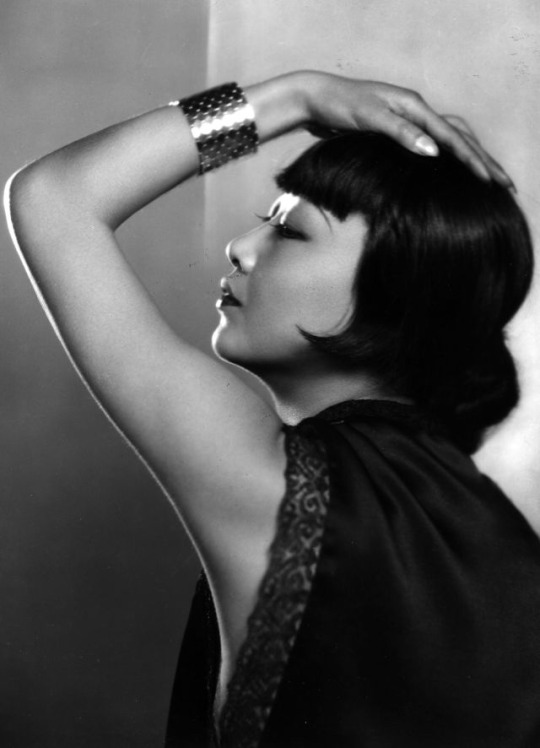
"Incredible beauty, incredible actress, incredible story."
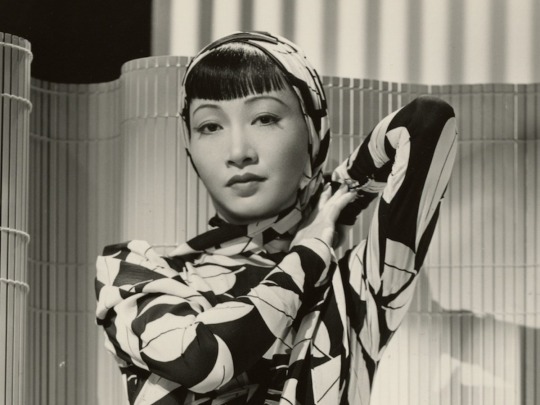
"-flapper fashion ICON. look up her fits please <3 -rumors of lesbianism due to her Close Friendships with marlene dietrich & cecil cunningham, among others -leveraged her star power to criticize the racist depictions of Chinese and Asian characters in Hollywood, as well as raise money and popular support for China & Chinese refugees in the 1930s and 40s. -face card REFUSED to decline"

Josephine Baker:
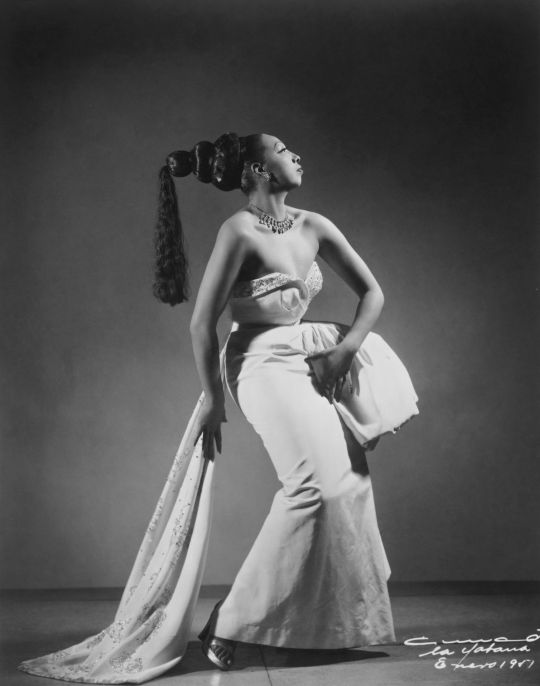
Black, American-born, French dancer and singer. Phenomenal sensation, took music-halls by storm. Famous in the silent film era.

Let's talk La Revue Negre, Shuffle Along. The iconique banana outfit? But also getting a Croix de Guerre and full military honors at burial in Paris due to working with the Resistance.
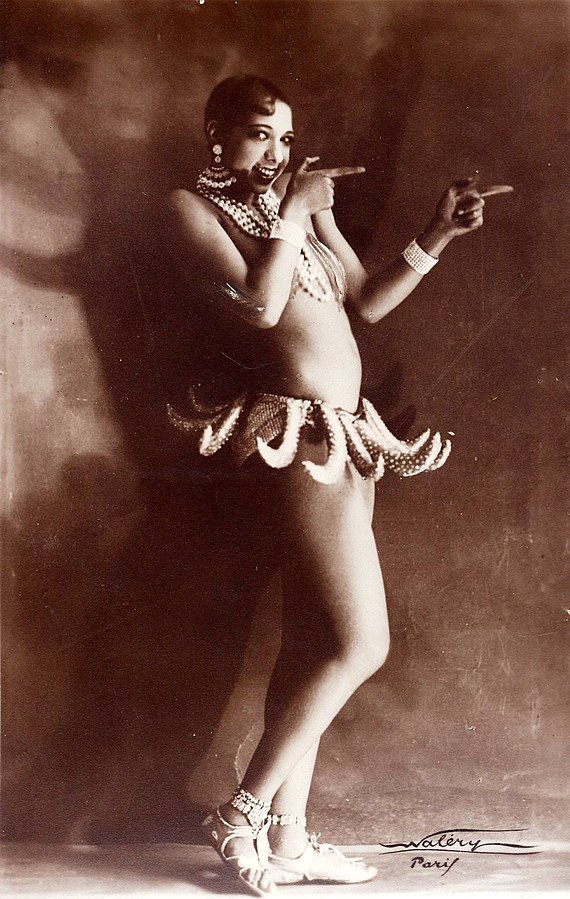
She exuded sex, was a beautiful dancer, vivacious, and her silliness and humor added to her attractiveness. She looked just as good in drag too.
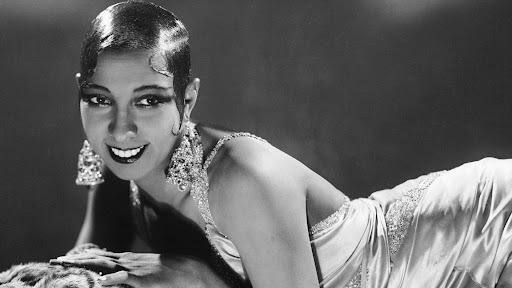

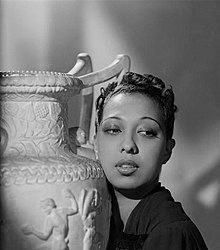
So I know she was more famous for other stuff than movies and her movies weren’t Hollywood but my first exposure to her was in her films so I’ve always thought of her as a film actress first and foremost. Also she was the first black woman to star in a major motion picture so I think that warrants an entry
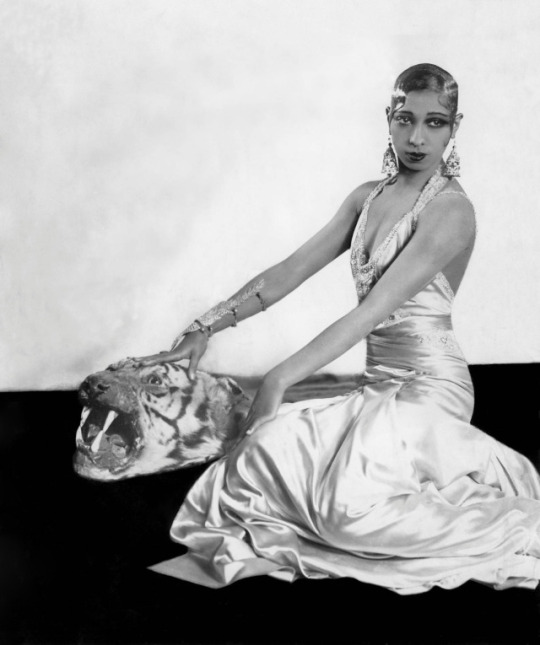
Iconic! Just look up anything about her life. She was a fascinating woman.

589 notes
·
View notes
Text
A portable light system that can digitize everyday objects
New Post has been published on https://sunalei.org/news/a-portable-light-system-that-can-digitize-everyday-objects/
A portable light system that can digitize everyday objects
When Nikola Tesla predicted we’d have handheld phones that could display videos, photographs, and more, his musings seemed like a distant dream. Nearly 100 years later, smartphones are like an extra appendage for many of us.
Digital fabrication engineers are now working toward expanding the display capabilities of other everyday objects. One avenue they’re exploring is reprogrammable surfaces — or items whose appearances we can digitally alter — to help users present important information, such as health statistics, as well as new designs on things like a wall, mug, or shoe.
Researchers from MIT’s Computer Science and Artificial Intelligence Laboratory (CSAIL), the University of California at Berkeley, and Aarhus University have taken an intriguing step forward by fabricating “PortaChrome,” a portable light system and design tool that can change the color and textures of various objects. Equipped with ultraviolet (UV) and red, green, and blue (RGB) LEDs, the device can be attached to everyday objects like shirts and headphones. Once a user creates a design and sends it to a PortaChrome machine via Bluetooth, the surface can be programmed into multicolor displays of health data, entertainment, and fashion designs.
Play video
PortaChrome: A portable light system that can digitize everyday objects Video: MIT CSAIL
To make an item reprogrammable, the object must be coated with photochromic dye, an invisible ink that can be turned into different colors with light patterns. Once it’s coated, individuals can create and relay patterns to the item via the team’s graphic design software, or use the team’s API to interact with the device directly and embed data-driven designs. When attached to a surface, PortaChrome’s UV lights saturate the dye while the RGB LEDs desaturate it, activating the colors and ensuring each pixel is toned to match the intended design.
Zhu and her colleagues’ integrated light system changes objects’ colors in less than four minutes on average, which is eight times faster than their prior work, “Photo-Chromeleon.” This speed boost comes from switching to a light source that makes contact with the object to transmit UV and RGB rays. Photo-Chromeleon used a projector to help activate the color-changing properties of photochromic dye, where the light on the object’s surface is at a reduced intensity.
“PortaChrome provides a more convenient way to reprogram your surroundings,” says Yunyi Zhu ’20, MEng ’21, an MIT PhD student in electrical engineering and computer science, affiliate of CSAIL, and lead author on a paper about the work. “Compared with our projector-based system from before, PortaChrome is a more portable light source that can be placed directly on top of the photochromic surface. This allows the color change to happen without user intervention and helps us avoid contaminating our environment with UV. As a result, users can wear their heart rate chart on their shirt after a workout, for instance.”
Giving everyday objects a makeover
In demos, PortaChrome displayed health data on different surfaces. A user hiked with PortaChrome sewed onto their backpack, putting it into direct contact with the back of their shirt, which was coated in photochromic dye. Altitude and heart rate sensors sent data to the lighting device, which was then converted into a chart through a reprogramming script developed by the researchers. This process created a health visualization on the back of the user’s shirt. In a similar showing, MIT researchers displayed a heart gradually coming together on the back of a tablet to show how a user was progressing toward a fitness goal.
PortaChrome also showed a flair for customizing wearables. For example, the researchers redesigned some white headphones with sideways blue lines and horizontal yellow and purple stripes. The photochromic dye was coated on the headphones and the team then attached the PortaChrome device to the inside of the headphone case. Finally, the researchers successfully reprogrammed their patterns onto the object, which resembled watercolor art. Researchers also recolored a wrist splint to match different clothes using this process.
Eventually, the work could be used to digitize consumers’ belongings. Imagine putting on a cloak that can change your entire shirt design, or using your car cover to give your vehicle a new look.
PortaChrome’s main ingredients
On the hardware end, PortaChrome is a combination of four main ingredients. Their portable device consists of a textile base as a sort of backbone, a textile layer with the UV lights soldered on and another with the RGB stuck on, and a silicone diffusion layer to top it off. Resembling a translucent honeycomb, the silicone layer covers the interlaced UV and RGB LEDs and directs them toward individual pixels to properly illuminate a design over a surface.
This device can be flexibly wrapped around objects with different shapes. For tables and other flat surfaces, you could place PortaChrome on top, like a placemat. For a curved item like a thermos, you could wrap the light source around like a coffee cup sleeve to ensure it reprograms the entire surface.
The portable, flexible light system is crafted with maker space-available tools (like laser cutters, for example), and the same method can be replicated with flexible PCB materials and other mass manufacturing systems.
While it can also quickly convert our surroundings into dynamic displays, Zhu and her colleagues believe it could benefit from further speed boosts. They’d like to use smaller LEDs, with the likely result being a surface that could be reprogrammed in seconds with a higher-resolution design, thanks to increased light intensity.
“The surfaces of our everyday things are encoded with colors and visual textures, delivering crucial information and shaping how we interact with them,” says Georgia Tech postdoc Tingyu Cheng, who was not involved with the research. “PortaChrome is taking a leap forward by providing reprogrammable surfaces with the integration of flexible light sources (UV and RGB LEDs) and photochromic pigments into everyday objects, pixelating the environment with dynamic color and patterns. The capabilities demonstrated by PortaChrome could revolutionize the way we interact with our surroundings, particularly in domains like personalized fashion and adaptive user interfaces. This technology enables real-time customization that seamlessly integrates into daily life, offering a glimpse into the future of ‘ubiquitous displays.’”
Zhu is joined by nine CSAIL affiliates on the paper: MIT PhD student and MIT Media Lab affiliate Cedric Honnet; former visiting undergraduate researchers Yixiao Kang, Angelina J. Zheng, and Grace Tang; MIT undergraduate student Luca Musk; University of Michigan Assistant Professor Junyi Zhu SM ’19, PhD ’24; recent postdoc and Aarhus University assistant professor Michael Wessely; and senior author Stefanie Mueller, the TIBCO Career Development Associate Professor in the MIT departments of Electrical Engineering and Computer Science and Mechanical Engineering and leader of the HCI Engineering Group at CSAIL.
This work was supported by the MIT-GIST Joint Research Program and was presented at the ACM Symposium on User Interface Software and Technology in October.
0 notes
Text
A portable light system that can digitize everyday objects
New Post has been published on https://thedigitalinsider.com/a-portable-light-system-that-can-digitize-everyday-objects/
A portable light system that can digitize everyday objects
When Nikola Tesla predicted we’d have handheld phones that could display videos, photographs, and more, his musings seemed like a distant dream. Nearly 100 years later, smartphones are like an extra appendage for many of us.
Digital fabrication engineers are now working toward expanding the display capabilities of other everyday objects. One avenue they’re exploring is reprogrammable surfaces — or items whose appearances we can digitally alter — to help users present important information, such as health statistics, as well as new designs on things like a wall, mug, or shoe.
Researchers from MIT’s Computer Science and Artificial Intelligence Laboratory (CSAIL), the University of California at Berkeley, and Aarhus University have taken an intriguing step forward by fabricating “PortaChrome,” a portable light system and design tool that can change the color and textures of various objects. Equipped with ultraviolet (UV) and red, green, and blue (RGB) LEDs, the device can be attached to everyday objects like shirts and headphones. Once a user creates a design and sends it to a PortaChrome machine via Bluetooth, the surface can be programmed into multicolor displays of health data, entertainment, and fashion designs.
Play video
PortaChrome: A portable light system that can digitize everyday objects Video: MIT CSAIL
To make an item reprogrammable, the object must be coated with photochromic dye, an invisible ink that can be turned into different colors with light patterns. Once it’s coated, individuals can create and relay patterns to the item via the team’s graphic design software, or use the team’s API to interact with the device directly and embed data-driven designs. When attached to a surface, PortaChrome’s UV lights saturate the dye while the RGB LEDs desaturate it, activating the colors and ensuring each pixel is toned to match the intended design.
Zhu and her colleagues’ integrated light system changes objects’ colors in less than four minutes on average, which is eight times faster than their prior work, “Photo-Chromeleon.” This speed boost comes from switching to a light source that makes contact with the object to transmit UV and RGB rays. Photo-Chromeleon used a projector to help activate the color-changing properties of photochromic dye, where the light on the object’s surface is at a reduced intensity.
“PortaChrome provides a more convenient way to reprogram your surroundings,” says Yunyi Zhu ’20, MEng ’21, an MIT PhD student in electrical engineering and computer science, affiliate of CSAIL, and lead author on a paper about the work. “Compared with our projector-based system from before, PortaChrome is a more portable light source that can be placed directly on top of the photochromic surface. This allows the color change to happen without user intervention and helps us avoid contaminating our environment with UV. As a result, users can wear their heart rate chart on their shirt after a workout, for instance.”
Giving everyday objects a makeover
In demos, PortaChrome displayed health data on different surfaces. A user hiked with PortaChrome sewed onto their backpack, putting it into direct contact with the back of their shirt, which was coated in photochromic dye. Altitude and heart rate sensors sent data to the lighting device, which was then converted into a chart through a reprogramming script developed by the researchers. This process created a health visualization on the back of the user’s shirt. In a similar showing, MIT researchers displayed a heart gradually coming together on the back of a tablet to show how a user was progressing toward a fitness goal.
PortaChrome also showed a flair for customizing wearables. For example, the researchers redesigned some white headphones with sideways blue lines and horizontal yellow and purple stripes. The photochromic dye was coated on the headphones and the team then attached the PortaChrome device to the inside of the headphone case. Finally, the researchers successfully reprogrammed their patterns onto the object, which resembled watercolor art. Researchers also recolored a wrist splint to match different clothes using this process.
Eventually, the work could be used to digitize consumers’ belongings. Imagine putting on a cloak that can change your entire shirt design, or using your car cover to give your vehicle a new look.
PortaChrome’s main ingredients
On the hardware end, PortaChrome is a combination of four main ingredients. Their portable device consists of a textile base as a sort of backbone, a textile layer with the UV lights soldered on and another with the RGB stuck on, and a silicone diffusion layer to top it off. Resembling a translucent honeycomb, the silicone layer covers the interlaced UV and RGB LEDs and directs them toward individual pixels to properly illuminate a design over a surface.
This device can be flexibly wrapped around objects with different shapes. For tables and other flat surfaces, you could place PortaChrome on top, like a placemat. For a curved item like a thermos, you could wrap the light source around like a coffee cup sleeve to ensure it reprograms the entire surface.
The portable, flexible light system is crafted with maker space-available tools (like laser cutters, for example), and the same method can be replicated with flexible PCB materials and other mass manufacturing systems.
While it can also quickly convert our surroundings into dynamic displays, Zhu and her colleagues believe it could benefit from further speed boosts. They’d like to use smaller LEDs, with the likely result being a surface that could be reprogrammed in seconds with a higher-resolution design, thanks to increased light intensity.
“The surfaces of our everyday things are encoded with colors and visual textures, delivering crucial information and shaping how we interact with them,” says Georgia Tech postdoc Tingyu Cheng, who was not involved with the research. “PortaChrome is taking a leap forward by providing reprogrammable surfaces with the integration of flexible light sources (UV and RGB LEDs) and photochromic pigments into everyday objects, pixelating the environment with dynamic color and patterns. The capabilities demonstrated by PortaChrome could revolutionize the way we interact with our surroundings, particularly in domains like personalized fashion and adaptive user interfaces. This technology enables real-time customization that seamlessly integrates into daily life, offering a glimpse into the future of ‘ubiquitous displays.’”
Zhu is joined by nine CSAIL affiliates on the paper: MIT PhD student and MIT Media Lab affiliate Cedric Honnet; former visiting undergraduate researchers Yixiao Kang, Angelina J. Zheng, and Grace Tang; MIT undergraduate student Luca Musk; University of Michigan Assistant Professor Junyi Zhu SM ’19, PhD ’24; recent postdoc and Aarhus University assistant professor Michael Wessely; and senior author Stefanie Mueller, the TIBCO Career Development Associate Professor in the MIT departments of Electrical Engineering and Computer Science and Mechanical Engineering and leader of the HCI Engineering Group at CSAIL.
This work was supported by the MIT-GIST Joint Research Program and was presented at the ACM Symposium on User Interface Software and Technology in October.
#3-D printing#affiliate#API#Art#artificial#Artificial Intelligence#author#Blue#bluetooth#california#career#career development#change#chart#coffee#Color#colors#computer#Computer Science#Computer Science and Artificial Intelligence Laboratory (CSAIL)#Computer science and technology#consumers#data#data-driven#Design#development#diffusion#display#displays#domains
0 notes
Text
Barcoded Playing Cards: Revolutionizing Game Security and Fair Play
In the ever-evolving landscape of card games, innovation is not just an option but a necessity to maintain security, fairness, and intrigue. Barcoded playing cards are a breakthrough that blends traditional gaming with modern technology, offering enhanced accuracy, transparency, and anti-cheating mechanisms. These cards are gradually making their way into professional gaming circuits, casinos, and even casual card game enthusiasts' hands, transforming how games are monitored, played, and enjoyed.
The Concept Behind Barcoded Playing Cards
Barcoded playing cards integrate tiny, invisible barcodes onto the surface of each card. These barcodes, usually printed with special ink, remain invisible to the human eye but are easily readable by digital scanning devices. Typically placed at the card’s edge or corner, the barcodes can be scanned quickly and accurately. This innovation allows each card to be identified in real time, making it possible to track every card’s location, movement, and even play order during a game.
By embedding this invisible information, barcoded playing cards ensure that each game can be monitored and verified for authenticity, making them especially valuable in environments like casinos and professional card tournaments where fairness is paramount.

Enhancing Game Security and Anti-Cheating Measures
The introduction of barcoded cards has elevated the standard of game security significantly. Traditional card games rely heavily on the honor system, human monitoring, and physical security measures, which can still leave room for cheating through sleight of hand or covert marking techniques. Barcoded cards, however, reduce these vulnerabilities:
Instant Scanning: Barcodes make it easy to track each card instantaneously, allowing for immediate verification of the deck’s integrity.
Automated Detection: Gaming systems can now use scanning equipment to identify unusual behavior patterns. For instance, if a player continuously handles a specific card in an unconventional way, the system can flag it for further inspection.
Enhanced Shuffle Monitoring: Shuffling can be a point of concern, especially in high-stakes games. With barcoded cards, every shuffle can be digitally analyzed to ensure true randomness, verifying that no order tampering has occurred.
Deck Integrity Checks: The barcodes can also be used to verify that all cards in a deck are present and accounted for. This functionality prevents card removal or switching, common tactics in many cheating schemes.
These features make barcoded playing cards a powerful tool in creating a fair, transparent, and secure gaming environment.
Boosting Fair Play in Tournaments and Casinos
In professional gaming and casinos, transparency and fairness are essential not only for player satisfaction but also for regulatory compliance. With barcoded playing cards, casinos and tournament organizers can go a step further in ensuring a fair gaming experience:
Real-Time Monitoring: Card movements can be displayed in real time, giving observers and officials a clear view of each hand, every draw, and each play made during a game.
Data Analytics: Barcoded cards offer rich data for analysis. Casinos can monitor which games are played most frequently, assess typical betting patterns, and use this information to improve game security measures or introduce new games aligned with players’ interests.
Enhanced Auditing: When disputes arise over potential game manipulation, digital logs generated through barcode tracking provide an unbiased record, making it easier to resolve issues quickly and fairly.
For gaming venues, these advantages go beyond just ensuring fair play; they also help build trust and confidence among players, enhancing customer loyalty.
Privacy and Ethical Considerations
As with any technology involving data, barcoded playing cards come with ethical and privacy concerns. To prevent misuse, it’s essential to ensure that player information remains protected. Casinos and gaming venues must carefully navigate data privacy to ensure that while gameplay is monitored, player identities and personal data are not unjustly tracked or stored.
Clear policies and transparent use of data are necessary to maintain player trust and uphold the values of fair play and respect.
The Future of Barcoded Playing Cards
Looking ahead, the future of barcoded playing cards is promising. As more venues adopt these cards, game developers may also incorporate similar technology in digital card games or mobile applications to enhance online gaming experiences. Additionally, advancements in AI and machine learning could enable barcoded cards to contribute even more toward analyzing game trends and providing a dynamic, real-time gaming experience.
Barcoded playing cards have already begun to reshape the landscape of card games, proving that even the simplest of games can benefit from technological innovation. By combining classic card gaming with modern technology, barcoded playing cards are setting new standards for security, transparency, and fairness, creating a more enjoyable experience for everyone involved.
0 notes
Text
Quality Time, Creating Puzzle Images, Burnt Pizza Smell
Quality Time, Creating Puzzle Images, Burnt Pizza Smell
Saturday morning, 21 September 2024
As I reenter the liminal state from the outward to inward transition, much of my real-world memory fades. I am still in a bed, but I am sitting on it. Proto-cognizant staging is predominant even though my illusory physical awareness is present. It intensifies with my somatosensory response but becomes surreal at one point. My activity seems to last a long time, being well-defined (including the text).
A fictitious young female relative is sitting on my left. (Zsuzsanna is sleeping on my left, but real-world recall is absent.)
We use pencils to create imagery, but the method is unique and surreal. This activity is secondary staging (arm and hand mobility and coordination). With well-defined proto-cognizance, it almost borders on genuine cognizance. The visuals and motions of writing and moving the pencil back and forth are extraordinarily realistic.
At one point, I print "MAZE" on the paper. By filling in the area, the word causes a maze to become defined (in white lines) through the pale gray pencil shading. However, being a dream, the patterns change. The rectangular maze is simple but does not seem complete. I may have to fill in more of the spaces. At one point, I realize I am pressing too hard. No additional images appear other than abstract patterns (including the face described below) and an eye inside a square. The girl creates and solves a few simple puzzles with the same method of writing one or two words and shading over them until a picture is defined as a white sketch.
I focus closely on the filled-in area. At one point, I see a girl's face with the right side (my view) flipped upside down. (See image.) I study it for a couple of minutes, feeling somewhat puzzled.
The door had been closed, but I check it at one point and find it open a few inches.
After several minutes, the girl's mother is on the bed, but now the bed is perpendicular to where it was (though my dream self does not notice or care). It is time for dinner. I get a vague impression that I am in a house where a brother on my father's side lives, but the people are fictitious.
The woman asks me if I am going to eat. I tell her, "I didn't hear myself telling me that." This scene is the most vivid protoconscious event as it usually is when looking directly at a personification of this state.
As I gaze at her, I am amazed by how much she looks like an older version of the girl I was with earlier. (Protoconsciousness, when personified, is often associated with being near a door because it occurs during a close-to-liminal state where real-world recall is sometimes more integrated, and a door is the virtual barrier between dream state illusion and viable consciousness).
There is a vivid smell of burnt pizza (with the sense of smell being rare in my dreams in this mode).
I leave the room to find the kitchen or dining area. (The house is unfamiliar.) However, at this point, my dream is less vivid (as proto-cognizant staging usually is since it typically defines only mental modeling in contrast to physical). It is more like I am moving through an undefined space, with the list of words approaching me.
I see a floating envelope. At least four words are on it in bold type. I read "VIBRATOR," but not any of the other words. My dream self makes no associations with the word. I do not know what it means. It is solely a matter-of-fact reading of the stable text.
My dream self fades before I reach another area of the house. I do not recall waking up from this dream.
I am guessing this unusual activity may have come from the influence of Invisible Ink books - or Yes & Know books. However, it is also likely associated with rubbing with a pencil to get an image of a coin or reveal the writing on another sheet of paper with a recess from previous writing. (In the latter case, it does distort the image if you press too hard as in my dream.)
On a side note, this dream debunks two asinine deceptions of all the mindless dream lore out there (of which virtually all is false - including lucid dreaming propaganda). One is the false claim that one "cannot read" in dreams (even though I have read in the dream state virtually every sleep cycle for over 50 years). Another is that the mind "cannot imagine new faces" - which is so unfathomably stupid, I cannot imagine a person of reasonable intelligence believing that. I have also read the opposite - that you cannot perceive a face correctly in the dream state.

0 notes
Text

Mastering Trade Show Success: The Ultimate Guide to Trade Show Display Graphics Printing Services
In the current competitive environment of trade shows, in which every booth competes to get recognized, your graphics act as your invisible salesperson. They're able to attract, educate and entertain the public, making them an essential element of successful trade exhibitions. This is why choosing the right printing company for your trade show graphics is essential. Stands Pro is a printing business that Stands Pro recognizes the significance of producing captivating images that effectively convey the message of your company. Let's take a look at what you need to know about printing graphics for trade shows and how they can improve your experience at an event.
**Understanding Your Unique Needs:**
Prior to beginning your printing process it is important to know your specific needs. What are your goals for the trade show? Do you intend to enhance exposure for your business and generate leads or display the latest innovations? Knowing your objectives will assist you choose the right images and media to get the desired outcomes.
**Quality Printing Materials for Lasting Impressions:**
Your graphic communicates professionalism and quality to your company. At Stands Pro we use only the best material and top-of-the-line printing techniques to deliver bright colors crisp images and lasting top-quality. You can discover attractive banners, striking backdrops, or even informative posters. We have a wide selection of items to fulfill your specific requirements as well as your budget.
**Tailored Design Solutions to Stand Out:**
Standing out in the highly competitive world of trade shows. We provide custom designs that are tailored to the image of your business as well as message. Our experienced team of designers collaborate with you to create striking, appealing graphics that connect with your ideal clients. If you need a complete overhaul of your logo or minor adjustments to your existing designs, we're here assist you in creating your ideal.
**Cost-Effective Printing Solutions Without Compromise:**
We understand the importance of budgets as a consideration in determining the number of exhibitors at trade exhibitions. We offer inexpensive printing solutions that do not reduce the quality of our products. From small-scale companies to large corporations, we accommodate clients of all sizes by offering reasonable pricing and discounts for large-scale purchases. Our goal is to help clients get the maximum impact at a minimal cost.
**Fast Turnaround Times to Meet Deadlines:**
The deadline pressure is a common problem for trade shows. We excel under the pressure. Our simplified workflow and efficient printing methods permit us to offer fast turnaround times, while not compromising high-quality. When you need to make last-minute adjustments or urgent orders, you can rely on us to ensure that your graphics are placed on time, every time.
**Comprehensive Installation and Support:**
Printing is only one aspect of the equation. Installation is equally crucial. Our team can provide extensive installation services that ensure that your prints seamlessly integrate into the booth. From getting your booth set up to tearing it down, we'll be here to help you every stage of your process, ensuring that you are able to enjoy your process from the beginning until finish.
**Commitment to Sustainability:**
Absolutely! If we discuss sustainable practices in the realm of graphic printing used for trade show display services and exhibitions, we're discussing our efforts to minimize the impact on the environment throughout the production of the process. This is the way we go about it:
1. Eco-friendly Materials: We place a top importance on using sustainable materials for our printing processes. This includes recycled cardboard and paper, as well as biodegradable inks as well as environmentally friendly materials. If we use products made of recycled or renewable resources, it reduces the need for raw materials and decreases the amount of wasted materials.
2. **Reduced Carbon Footprint: We're committed to reduce our carbon footprint by making use of sustainable practices for our printing facility. This means investing in equipment that is energy efficient as well as optimizing processes in order to reduce consumption of energy, and utilizing sustainable energy resources as frequently as we can. Through reducing our dependence on fossil fuels, and decreasing the greenhouse gasses, we can contribute to curbing warming temperatures while protecting the natural surroundings.
3. Recycling and reduction of waste: We're committed to reducing the amount of waste and enhancing recycling efforts throughout our company. This involves implementing techniques to decrease waste which concentrate on optimizing the use of materials as well as cutting down on surplus inventory. We also advocate recycling all paper, cardboard and other recyclable materials to print. By removing waste from the landfill and promoting the idea of a circular economic system, we can preserve our natural resources and reduce pollution to the environment.
4. Environmental Certifications and Standards: We comply with stringent environmental standards and certificates in order to ensure that the printing techniques used by us are compliant with the strictest ecological standards. This could include certifications such as Forest Stewardship Council (FSC) certification for paper that is responsibly sourced and other materials that are conforming to ISO 14001 environmental management standards. By following these standards and certifications we demonstrate our commitment to environmental stewardship as in the constant improvement of sustainable performance.
5. **Educational Initiatives: Our company believes in the power in education as well as awareness that can create positive change. We're dedicated to instructing all of our stakeholders and customers about the importance of printing sustainably and giving them guidance on how they can make sustainable choices. It doesn't matter whether it's through education sources such as sustainability reports, or outreach programs designed for customers. We'd like to encourage others to join us in our quest to create an sustainable and environmentally friendly future.
At the final level, our dedication to sustainability is a key aspect of our business strategy and an indication of our dedication to ethical and responsible business practice. In focusing on the environment when printing, we aim to minimize the environmental impact of our operations, protect resources, and ensure an improved environment for next generation.
**Customer Satisfaction Guaranteed:**
Our first priority. We stand by the high quality of our work, and strive to exceed your expectations on every job. From the initial consultation to our final deliver, we're committed to providing top-quality services and results that speak for themselves. If you opt for Stands Pro to design your graphics for trade show requirements you'll be able to relax knowing that you're top of the line.
In the end, achieving the art of trade show success is a matter of attention to detail, imagination and a dedication to quality. By choosing Stands Pro as your reliable supplier of graphic printing for trade show displays services and equipment, you'll have everything that you need to make an unforgettable impression when you attend your next trade event. Visit our website (https://standspro.com) to learn more and get started on your journey to trade show success today!
#exhibition stand#exhibition stand design#exhibition stand builders#exhibition stand builders in berlin#exhibition stand builders in germany#exhibition stand builders Frankfurt#booth builders in frankfurt#exhibition stand builders Munich#Best exhibition stand builders in germany#exhibition stand contractors#modular exhibition stands#custom exhibition stands#portable exhibition stands#double decker exhibition stand#stand construction companies in germany#exhibition booth contractor#exhibition stand manufacturers#exhibition stand design company#exhibition stand builders company#exhibition stand builders Amsterdam#exhibition stand builders in Netherlands#Best exhibition stand builders in Netherlands#stand construction companies in Amsterdam#modular display stands#Messebau#Messe Amsterdam#Messe Amsterdam Rai#stand building company#exhibition construction companies#Custom stand design solutions
0 notes
Text
Jenga Chapter 14
Ao3 Masterpost | Prev Chapter | Next Chapter
This fic is rated Mature
All content warnings can be found in the masterpost
These past four months had been really interesting for Patton. Still, he supposed dog walking was never supposed to lead into a plot to overthrow the government. It was the one thing Patton thought he’d be doing with no correlation to magic at all. Still, he did enjoy the side hustle he had, and he was also happy with helping out in any way he could.
But it was a bit tiring dog walking and being paranoid that the police might stop him at any moment and figure everything out. All the letters were in between wads of cash, and the ink invisible; to anyone just looking it would look like someone just slipped a drawing in when they were putting the money in. Still, it stressed Patton and the others out to no end with how integral they had become to sending messages between members. On any given day they were walking twice the normal amount. And while it wasn’t all that fast, or efficient, it was apparently the most secure way they had managed to do. None of them had been stopped once.
The resistance, which had occupied a good chunk of their time, had started twenty years ago. Their leader, Desmona, had started it up when her sister had been killed by the guards, for being a fire magic user. It had taken time for them to build up to the point they were at now, but Desmona had been there at every step. Carefully vetting new members, until she had a select group who could do so. She had only officially met Patton and the others a few months ago, giving them orders to carry out messages between members in late September.
Still, he had a few other things that occupied his time as well, his brother’s birthday being yesterday was one of them. Patton had managed to save up enough to get Virgil a new computer, not to mention the gifts the others had gotten him.
It was a bit expensive, and Patton had taken to doing some extra dog walking for the members of the resistance to make up for some of the profit he’d spent. Speaking of which, he was nearly at the first house of the day.
“Oh Patton deary, do come in, do come in!” Madame Monche bellowed, thrusting the door open as soon as Patton had knocked. “I’m afraid Franky is terribly ill today, so you can not walk him, and I must discuss with you how absolutely horrendous this is. You might not be walking him for weeks!”
“Oh, that sounds terrible, I hope he’s alright!” The worry seeping into Patton’s voice. At least until he caught Madame Monche’s eyes, and recognized that she was lying about Franky being ill.
“Yes! It’s quite terrible, now please do come inside dear! I have to talk to you about how long you’ll be out of commission.”
With that, Patton let her pull him inside, shutting the door behind her.
“Now darling, any recording devices or technological marvels?”
“Just my phone, I’ll put it in the other room.”
“Good.”
It was another meeting, that’s all, it was probably about a message he needed to tell Desmona, the leader of the resistance, in person.
“As you may have been aware, we’ve been a bit anxious lately. This is due to our plan being nearly at fruition. We’re having a special meeting, in a few weeks, at Location Flight. You need to be there. Desmona’s orders.”
“I’ll tell the others!”
0 notes
Text
Embracing SMP for Longer Hairstyles: The Ultimate Hair Restoration Solution

At Scalpmasters, we understand that hair loss can affect your confidence and overall well-being. Our scalp micropigmentation (SMP) clinic offers an innovative solution tailored to those seeking to enhance their look while maintaining longer hairstyles. Located at 343 Elm Street, Reno, NV 89503, we are dedicated to providing top-notch hair restoration services through the application of permanent ink pigment.
What is SMP for Longer Hairstyles?
Scalp Micropigmentation (SMP) is a non-invasive smp for longer hairstyles procedure that involves applying tiny ink pigments to the scalp to replicate the appearance of natural hair follicles. This technique is particularly beneficial for individuals with longer hairstyles, as it adds density and creates the illusion of thicker hair. Our specialized SMP for longer hairstyles ensures seamless integration with your existing hair, giving you a fuller, more youthful look.
Why Choose Scalpmasters?
Expertise and Experience
Scalpmasters stands out due to our team's extensive experience and expertise in SMP. Our practitioners are highly trained in the latest techniques, ensuring precise and natural-looking results. We pride ourselves on our attention to detail and commitment to excellence, making us the go-to clinic for scalp micropigmentation in Reno and beyond.
State-of-the-Art Technology
We utilize state-of-the-art equipment and high-quality pigments to ensure the best possible outcomes for our clients. Our advanced tools and techniques enable us to achieve the most realistic and long-lasting results, tailored to your unique hair restoration needs.
Personalized Consultations
At Scalpmasters, we believe in personalized care. Our process begins with a thorough consultation to understand your goals and expectations. We customize each treatment plan to suit your specific requirements, ensuring a tailored approach that delivers optimal results.
Our Services
Scalp Micropigmentation (SMP)
Our primary service, SMP, is ideal for those experiencing thinning hair or bald spots. By applying precise microdots of pigment to the scalp, we create the illusion of natural hair follicles, enhancing the overall appearance of your hair.
SMP for Longer Hairstyles
Specifically designed for individuals with longer hair, this service focuses on adding density and depth to your existing hair. Our skilled technicians ensure a seamless blend, resulting in a fuller and thicker look.
Hairline Restoration

A well-defined hairline can dramatically improve your appearance. Our hairline restoration service recreates a natural-looking hairline, customized to complement your facial features and personal style.
Scar Camouflage
If you have scars from previous hair transplants or injuries, our scar camouflage service can effectively conceal them. Using advanced SMP techniques, we blend the pigment with your natural hair color, making the scars virtually invisible.
Why We Are the Best
Proven Track Record
Our success stories and satisfied clients speak volumes about the quality of our services. We have helped numerous individuals regain their confidence and achieve their desired look through our expert SMP treatments.
Exceptional Customer Service
Customer satisfaction is our top priority. From the initial consultation to post-treatment care, we ensure a supportive and comfortable experience for all our clients. Our friendly staff is always available to answer your scalpmasters questions and address any concerns.
Comprehensive Aftercare
We provide detailed aftercare instructions to ensure the longevity and effectiveness of your SMP treatment. Our team is committed to your long-term satisfaction and will guide you through every step of the process.
Conclusion
Scalpmasters is your premier destination for scalp micropigmentation, especially if you are looking to enhance longer hairstyles. Our expertise, advanced technology, and personalized care set us apart as the best in the industry. Visit us at 343 Elm Street, Reno, NV 89503, or call 1-877-761-6727 to schedule your consultation today. Let us help you regain your confidence and achieve the fuller, thicker hair you desire.
0 notes
Text
Office ID Cards: Benefits of Implementing in Your Workplace

In today’s competitive business environment, ensuring the security and efficiency of your workplace is paramount. One of the most effective ways to achieve this is through the use of well-designed office ID cards. These cards are not just tools for identification; they are integral to the overall security infrastructure and operational efficiency of modern businesses. At IVYPrints, based in Jaipur and trusted by top corporations and businesses across India, we specialize in creating high-quality ID cards that cater to various professional needs. With a commitment to excellence, dispatch within 24 hours, and a track record of over 100,000 happy customers, IVYPrints is your go-to provider for all ID card printing needs.
Importance of Office ID Cards
Office ID cards serve multiple purposes beyond mere identification. They are essential for:
Enhancing Security: ID cards help in controlling access to different parts of the workplace, ensuring that only authorized personnel can enter specific areas. This is crucial for protecting sensitive information and maintaining a secure environment.
Streamlining Operations: With integrated technologies like RFID and smart chips, ID cards can be used for time tracking, attendance management, and even cashless transactions within the office. This not only simplifies administrative tasks but also enhances overall efficiency.
Building Professionalism: A well-designed ID card projects a professional image and fosters a sense of belonging among employees. It serves as a tangible representation of your company's brand and values.
Enhanced Security and Access Control
Implementing office ID cards significantly enhances workplace security by controlling and monitoring access to different areas. ID cards can be integrated with access control systems, ensuring that only authorized personnel can enter restricted zones. This prevents unauthorized access and helps protect sensitive information, equipment, and assets. Additionally, ID cards with features like RFID or smart card technology provide a seamless and secure way to manage access, enhancing overall security protocols in the workplace.
Holographic Overlays: These overlays add a layer of security that is difficult to duplicate. The holographic images shift when viewed from different angles, making it easy to spot counterfeit cards.
Smart Card Technology: Smart cards come with embedded microchips that store employee data and access credentials. These cards can be used for secure access to buildings and computer systems, making them ideal for high-security environments.
RFID and NFC Integration: RFID (Radio-Frequency Identification) and NFC (Near Field Communication) technologies enable contactless communication between the card and a reader. This allows for quick and secure access control, ideal for high-traffic areas.
Biometric Data: For the highest level of security, biometric data such as fingerprints, facial recognition, or iris scans can be included on the ID card. This ensures that only the authorized individual can use the card.
UV Ink and Watermarks: Invisible to the naked eye, UV ink and watermarks can only be seen under ultraviolet light. These features are excellent for verifying the authenticity of the ID card without cluttering the design.
Streamlined Attendance and Time Tracking
Office ID cards can be integrated with attendance and time-tracking systems, simplifying the process of monitoring employee hours. Employees can simply swipe or scan their ID cards when entering and exiting the workplace, providing an accurate and efficient method of recording attendance. This reduces administrative workload, eliminates manual errors, and ensures accurate payroll processing. The convenience of automated time tracking also promotes punctuality and accountability among employees.
Fostering a Professional Work Environment
ID cards contribute to a professional work environment by promoting a sense of belonging and accountability. Personalized ID cards featuring employee names, photos, and job titles make it easier for staff to identify and address each other, fostering better communication and teamwork. Moreover, displaying company branding on ID cards reinforces the organization’s identity and professionalism. This not only boosts employee morale but also leaves a positive impression on clients and visitors.
Improved Visitor Management
Implementing office ID cards can enhance visitor management by distinguishing between employees and visitors. Visitors can be issued temporary ID cards, which can be monitored and controlled similarly to employee cards. This ensures that visitors are always accompanied by an authorized employee and can only access designated areas. Effective visitor management improves overall security and creates a safer and more organized workplace environment.
Customization Options
A key aspect of effective ID cards is their customization to reflect your brand’s identity. IVYPrints offers extensive customization options to ensure your ID cards are not only secure but also professional and visually appealing:
Design and Layout: Choose from over 250+ designed templates or work with our design team to create a custom layout that includes your company logo, colors, and branding elements. This ensures that your ID cards are a seamless extension of your corporate identity.
Material Options: We offer various material options, including durable PVC and eco-friendly alternatives. PVC cards are known for their longevity and ability to withstand daily wear and tear.
Printing Techniques: Our state-of-the-art printing techniques ensure high-quality finishes. Options include full-color printing, edge-to-edge printing, and dual-sided printing. High-resolution printing ensures every detail of your design is captured perfectly.
Personalization: Each ID card can be personalized with the employee’s name, photograph, job title, and other relevant information. This not only helps with identification but also adds a personal touch to the card.
Additional Features: Incorporate features such as barcodes, QR codes, and magnetic stripes for various applications, including access control, time tracking, and asset management.
Lanyards and Accessories: Complement your ID cards with customized lanyards and accessories that feature your company’s logo and colors. This not only enhances the professional look but also provides practical functionality.
Benefits of Choosing IVYPrints
Selecting IVYPrints for your ID card printing needs offers several advantages:
Fast Turnaround: We understand the importance of timely delivery. Our efficient printing process ensures that your ID cards are dispatched within 24 hours, allowing you to receive them quickly and efficiently.
High Customer Satisfaction: With over 100,000 happy customers, our reputation for delivering high-quality products and exceptional customer service speaks for itself. Our team is dedicated to ensuring you are completely satisfied with your order.
Expertise and Experience: Our extensive experience in the industry makes us a trusted partner for top corporations and businesses across India. We stay updated with the latest trends and technologies to provide you with the best solutions.
Comprehensive Solutions: From design and printing to accessories and beyond, we offer comprehensive solutions for all your ID card needs. This makes IVYPrints a one-stop shop for everything related to office ID cards.
Conclusion
Office ID cards are an essential component of workplace security and operational efficiency. At IVYPrints, we are committed to providing high-quality, secure, and customizable ID cards that meet your specific needs. Trusted by top corporations and with over 250+ designed templates, we deliver exceptional products with a quick dispatch within 24 hours. Trust IVYPrints to provide the perfect ID card solutions that enhance both security and efficiency in your workplace.
#IVYPrintsJaipur #IVYPrintsIndia #IDCardPrinting #LanyardPrinting #SchoolIDCardPrinting #OfficeIDCardPrinting #PVCIDCard #PVCIDCardPrinting #EventIDCardPrinting #PVCRFIDCard
0 notes
Text
UV LED Chip Manufacturers: Pioneers In Ultraviolet Technology
Ultraviolet (UV) technology has come a long way over the years. From being used in simple applications like detecting fake currency notes to sophisticated uses in medical treatments, UV LED chips are making a significant impact in various fields. This blog will take you through the fascinating world of UV LED chip manufacturers, with a special focus on one of the leading companies in this domain, Zhuhai Tianhui Electronic Co., Ltd. (Tianhui).
What Are UV LEDs?
LEDs, or Light Emitting Diodes, are tiny devices that emit light when an electric current passes through them. UV LEDs are a special kind of LED that emit ultraviolet light, which is invisible to the human eye but can have powerful effects. UV light is categorized into three types based on its wavelength:
UVA (315-400 nm): This type is closest to visible light and is commonly used for curing adhesives, coatings, and inks. UVB (280-315 nm): This type has more energy than UVA and is often used in medical treatments, such as treating skin conditions. UVC (100-280 nm): This type has the highest energy and is used for sterilization and disinfection because it can kill bacteria and viruses.
The Rise of UV LED Technology
Traditional UV light sources, like mercury vapor lamps, have been used for many years. However, these lamps are bulky, consume a lot of energy, and contain hazardous materials. UV LEDs, on the other hand, are compact, energy-efficient, and environmentally friendly. This shift towards UV LED technology has opened up new possibilities in various industries.
Why UV LEDs?
Energy Efficiency: UV LEDs consume less power compared to traditional UV light sources. Environmental Safety: Unlike mercury lamps, UV LEDs do not contain harmful substances. Long Lifespan: UV LEDs have a longer operational life, reducing the need for frequent replacements. Compact Size: Their small size allows for more flexible design and application in various devices.
Leading UV LED Chip Manufacturers
Several companies around the world are at the forefront of UV LED technology, each contributing to its rapid advancement. Let's explore some of the leading manufacturers and their contributions.
Zhuhai Tianhui Electronic Co., Ltd.
Founded in 2002, Zhuhai Tianhui Electronic Co., Ltd. is a high-tech company specializing in UV LED technology. They have integrated research and development, production, sales, and solutions for various UV LED applications. Tianhui is renowned for its comprehensive range of UV LED products and its commitment to quality and innovation.
Products and Applications
Tianhui offers a wide range of UV LED products, including: UVA, UVB, and UVC LEDs: Covering wavelengths from 240 nm to 425 nm. Small Power SMD: Surface-mounted devices suitable for compact applications. High Power Lambert Type LEDs: Offering higher energy output for demanding applications. DIP LEDs: Through-hole devices for traditional mounting methods.
Their UV LEDs are used in various industries, including:
Money Detection and Counting: UV LEDs help identify counterfeit currency. Anti-Counterfeiting: Used in product packaging and documents to prevent forgery. Leak Checking: UV LEDs help detect leaks in industrial equipment and pipelines. Biochemical Medical Applications: Used in treatments and diagnostic devices. Sterilization and Air Purification: UVC LEDs are effective in killing germs and purifying the air. UV Curing: Used to harden adhesives, coatings, and inks quickly.
Competitive Edge
Tianhui stands out due to several key advantages: Quality: Their UV LEDs are known for stable quality and reliability. Price: They offer competitive prices without compromising on quality. Comprehensive Product Range: They provide a complete series of UV LED products to meet diverse needs.
Nichia Corporation
Nichia Corporation, based in Japan, is another leading player in the UV LED market. They are well-known for their innovation in LED technology and have made significant advancements in UV LED applications. Nichia's UV LEDs are used extensively in industrial and medical fields due to their high efficiency and reliability.
Seoul Viosys
Seoul Viosys, a subsidiary of Seoul Semiconductor, is a prominent manufacturer of UV LEDs. They offer a broad spectrum of UV LED products, including those for sterilization, curing, and medical applications. Their Violeds technology, which uses UV LEDs for sterilization, has gained significant attention for its effectiveness against pathogens.
LG Innotek
LG Innotek, part of the LG Group, has also made strides in the UV LED industry. They produce UV LEDs that are used in water purification, air sterilization, and healthcare. LG Innotek is known for its advanced technology and rigorous quality control standards.
How UV LEDs Are Made
Manufacturing UV LEDs is a complex process that involves several steps. Here's a simplified overview of how these tiny yet powerful devices are made: Substrate Preparation: The process begins with preparing a substrate, usually made of materials like sapphire, silicon carbide, or gallium nitride. Epitaxial Growth: Layers of semiconductor materials are grown on the substrate using techniques like Metal-Organic Chemical Vapor Deposition (MOCVD). These layers form the core of the LED. Doping: The semiconductor layers are doped with specific impurities to create p-n junctions, which are essential for the LED to emit light. Chip Fabrication: The doped layers are then processed to create individual LED chips. This involves photolithography, etching, and metallization. Packaging: The LED chips are packaged to protect them and facilitate their integration into various devices. Packaging can include mounting the chip on a heat sink, adding lenses, and encapsulating it in resin. Testing: Finally, the packaged LEDs are tested for performance, including their light output, wavelength, and electrical characteristics.
The Future of UV LED Technology
The future of UV LED technology looks promising, with advancements continuing to expand its applications. Here are some areas where UV LEDs are expected to make significant impacts:
Healthcare
UV LEDs are already being used for sterilization and disinfection, and their role in healthcare is set to grow. UVC LEDs, for instance, are effective in killing bacteria and viruses, making them invaluable in hospitals and clinics. They are used in disinfecting medical instruments, air, and water, reducing the risk of infections.
Water and Air Purification
Access to clean water is a critical issue worldwide. UVC LEDs offer a solution by providing an effective means of purifying water. They can kill harmful microorganisms without the use of chemicals. Similarly, UV LEDs are used in air purifiers to eliminate airborne pathogens, ensuring cleaner and safer indoor air.
Industrial Applications
In industrial settings, UV LEDs are used for curing adhesives, coatings, and inks. This process, known as UV curing, is fast and efficient, reducing production times and improving product quality. UV LEDs are also used for non-destructive testing and quality control in manufacturing.
Consumer Electronics
UV LEDs are finding their way into consumer electronics, such as smartphones and wearables. For example, some smartphones now feature UV sensors that can measure UV exposure, helping users protect their skin from harmful rays.
Conclusion
UV LED technology is revolutionizing various industries with its energy efficiency, compact size, and powerful capabilities. Manufacturers like Zhuhai Tianhui Electronic Co., Ltd. are at the forefront of this revolution, providing high-quality and reliable UV LED products for a wide range of applications.
Tianhui's comprehensive range of UV LEDs, from UVA to UVC, and their commitment to innovation and quality, make them a standout player in the UV LED market. Their products are used in diverse fields, from healthcare and industrial applications to consumer electronics and environmental solutions.
As UV LED technology continues to evolve, it promises to bring even more exciting developments. Whether it's improving healthcare, ensuring clean water and air, or enhancing industrial processes, UV LEDs are poised to make a lasting impact on our world. With companies like Tianhui leading the way, the future of UV LED technology looks bright and full of possibilities.
1 note
·
View note
Text
Choosing the Right Anti Counterfeit Solutions for Your Brand
Counterfeiting is a significant issue affecting businesses across various industries worldwide. Brands lose millions of dollars in revenue annually due to counterfeit goods. It can also tarnish brand reputation and jeopardize consumer safety. Therefore, choosing the right anti-counterfeit solutions for your brand is crucial. The various anti-counterfeit solutions explored and how to select the right strategies for your brand:
Different Types ofCounterfeit Solutions
Holograms and Security Labels: These labels use optical technologies to create unique visual effects that are difficult to replicate. These Product Security Measures can include various features. For example, color-shifting inks change color when viewed from different angles, Microtext comprising tiny text that is difficult to replicate without specialized equipment, and QR codes that can be scanned for product verification.
RFID and NFC Tags: Radio Frequency Identification (RFID) and Near Field Communication (NFC) tags are electronic Anti Counterfeit Measures that help track and authenticate products. These tags can be embedded in the packaging or products themselves. They can provide real-time data on the product's origin and supply chain.
Tamper-Evident Packaging: This packaging features designs that reveal if a product has been opened or tampered with. Anti counterfeit Packaging can include breakable seals, tear strips, or vacuum seals.
Invisible Inks and UV Markings: They are invisible to the naked eye but can be seen under ultraviolet (UV) light. These markings can add hidden identifiers to products and packaging, making replication difficult.
Blockchain Technology: It provides a secure, decentralized ledger that can track products from manufacturing to sale. This technology ensures transparency and immutability. It allows customers and brands to verify the authenticity and origin of products.
Serialization and Barcoding: Serialization involves assigning a unique identifier (such as a barcode or QR code) to each product. This identifier can track products through the supply chain and verify their authenticity.
Product Authentication Apps: Many brands are developing mobile apps that allow customers to verify the authenticity of products by scanning QR codes, barcodes, or NFC tags. These apps can provide real-time verification and build trust with customers.
Choosing the Right Anti-Counterfeit Solutions
When selecting anti-counterfeit solutions for your brand, consider the following factors:
Industry and Product Type: Different industries and product types may require specific anti-counterfeit solutions.
Budget: Evaluate your Brand protection budget and determine which solutions are feasible within your financial constraints.
Level of Security: Assess the level of security each solution offers and its effectiveness in protecting your brand.
Supply Chain Integration: Consider how the solution integrates with your existing supply chain processes. An optimum match will boost Supply chain security.
Customer Experience: Choose solutions that enhance the customer experience, such as product authentication apps.
Regulations and Compliance: Ensure the solutions you choose comply with industry regulations and standards.
Scalability: Choose solutions that can scale with your brand's growth and adapt to changing market conditions.
Conclusion
Choosing the right anti-counterfeit solutions for your brand is essential for protecting your products, reputation, and customers. By understanding the impact of counterfeiting and considering the various available solutions, you can make informed Supply Chain Integrity decisions that best suit your brand's needs. Implementing effective anti-counterfeit strategies helps safeguard your brand and builds trust and loyalty with your customers.
0 notes
Text
Fabrication: Fragments
Fragments = both Wisps and Figments.
Figments = Parts of a person that make up their personality and responses, given consciousness in their imagination. Only visible to each other and the SELF, apart from those in the SELF's imagination.
Wisps = Qualities of one SIDE of FIGMENTS, given consciousness in the SELF's imagination. Less tangible. Tend to disappear lots for everyone but their FIGMENTS. Only visible to each other and the SELF, apart from those in the SELF's imagination.
..............................................................................................................................
Features:
Body: Their SELF's, and human-shape. If the SELF is white, they are the same white that paper is; if POC, they are a shade of grey/black. Black ink for blood. Hair can be unnatural colours.
Conditions/disabilities: The same as SELF's.
Colour palette: Figments can wear any colour they want and with whatever colour hair or eyes, but Wisps are monochrome. They do have colours too, but only one, and only outside of Mindspace.
Abilities:
Near-immortality: Due to being an abstract concept and an integral part of SELF. They can 'die', where their energy to keep a consciousness and appearance is drained, so they return to their function of influencing the SELF without either until they regain enough energy to wake up & take form again.
Connection to SELF: They can influence the part of them they correspond to, purposely or accidentally (eg. Anxiety causes panic attacks). If SELF is doing well, they are, and vice-versa.
Human side: Half-human, half-concept. With IMAGINATION and energy, can make it look like to others that they are human.
Invisibility: To everyone apart from SELF and their Fragments. Can be toggled for people in the Fabrication.
Paint-drunk: Paint is their equivalent of alcohol. Non-addictive, non-toxic, and okay for children Fragments. Hangovers/taste of paint still exists. 'Weaker' paint (eg. watercolour) is less alcoholic, 'stronger' paint (eg. wall paint) is more. PSA: don't drink paint!
(sorry this is a long list here's a paragraph break)
LIGHTBULB: Representation of their hope that gets dimmer the lower it gets. If it breaks, they 'die'. If held by the correct Fragment, it can be used to affect the SELF's emotions like the Fragments can without it, but more strongly. One for each Fragment.
Emotion/IMAGINATION-fuelled powers: Any powers are based off them. Positive emotions = harmless/beautiful, negative emotions = harmful, scary. Strong emotions or IMAGINATION = strong powers, weak emotions or IMAGINATION = weak powers.
Fighting powers: Whatever they can imagine. The main Fragments talked about are all dyspraxic, so use honing attacks.
Paint-walking: Fast-travelling by hopping in paint or ink and moving quickly from one place to another. When they hop out, the paint/ink explodes over the surroundings and sky.
Colour palette change (Wisps only): If outside of the Mindspace, Wisps have a colour added to their usual monochrome colours. Can't be toggled.
Wings (Figments only): Devil or angel-like. Needs energy to summon, and are otherwise absent.
Some have unique powers to others; see their fact files for more info.
Weaknesses:
LIGHTBULB: If broken, they 'die'. It won't shatter by force under most circumstances, but will if its light is fully extinguished.
Connection to SELF: Both ways - if SELF isn't doing okay, they aren't, and vice-versa. Each other's downfall.
Emotion/IMAGINATION-fuelled powers: Uncontrollable emotions = bad situations, depressed Fragments lose power, etc..
Human side: These traits mean they can still get ill, pass out, tire easily compared to some, etc.. They're gods with human limits.
Culture, perception, general traits:
Guardians, seeing as they're in charge of the Fabrication. Inanis (their religion) exists; not that people know what they look like, usually. It feels weird, so they avoid people learning what they are.
Often say they're a hybrid or human if they want to be discreet.
No real culture. Closest to human culture, if anything.
They can recieve prayers. They answer them if they want to, but think that people are praying to literal children is pretty stupid.
0 notes